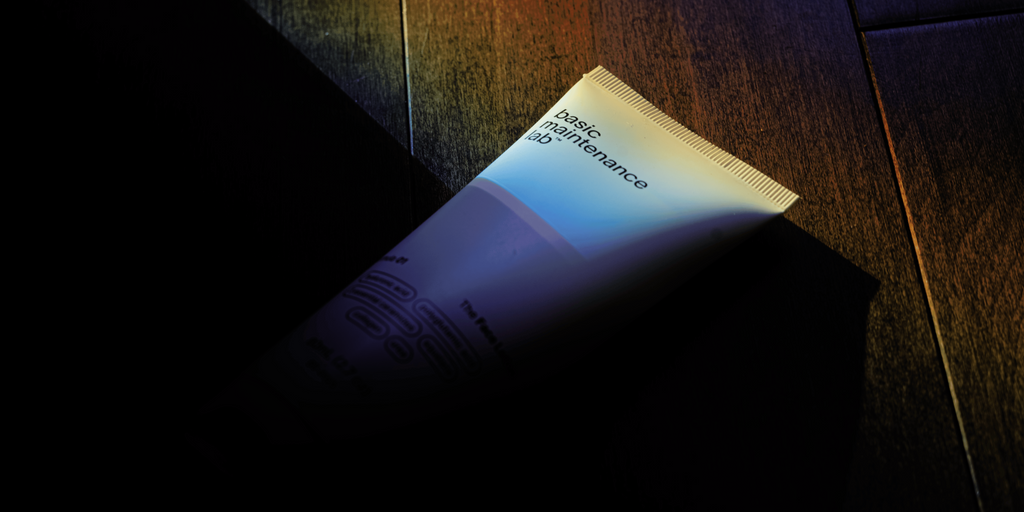What Are Parabens? The Truth About Cosmetics Most Vilified Ingredient.

What are Parabens?
A type of preservative. The most common ones are methylparaben, ethylparaben, propylparaben and butylparaben. They’re often used in combinations with each paraben doing something different - i.e. it controls a different type of microbial growth.
Why do parabens have a bad reputation?
Briefly, there were studies! One found that parabens mimicked estrogen in rats - excessive exposure to estrogen has been linked to breast cancer and reproductive disorders. Another study reports that they found parabens in 20 different human breast tumors. Another one concluded that parabens are absorbed through the skin, and daily use with them can build up in your system.
Why aren’t they banned?
Because the scientific community and regulatory bodies disagree with the media’s interpretation of the studies. One of the studies was conducted on rats, with a high concentration of parabens injected directly beneath the skin. The study that reported finding parabens in breast tumors was done so without any comparison to normal, non-cancerous tissue. The study that measured the cumulative effects of parabens was done on the entire body at concentrations nearly 100x higher than would ever be used in any product.
So what happened?
The researchers behind each study actually clarified their testing and results. But, the damage to the reputation of parabens had been done. Consumers caught wind, and brands obliged to meet public perception. The scientific community - more confused than ever - began studying parabens even more. The results? No measurable problems. There still isn’t a study showing a convincing link between paraben use and negative health effects.
Does Basic Maintenance use parabens?
No. But we could, and quite frankly, we should. It would be more cost-effective. This just happens to be an instance of fear-mongering that has prevailed to the point it’s nearly impossible for young, start-up brands to risk using them. Public perception and consumer demands - no matter how misguided they may be - are still real factors to consider when formulating a product. With a strong majority of consumers convinced about the damaging effects of parabens, we felt it necessary to avoid them.
What preservatives does Basic Maintenance use?
Our products are formulated with phenoxyethanol. While phenoxyethanol has been touted as a natural preservative, the reality of it is that it isn’t. It’s entirely synthetic. Brands that claim to be all natural with phenoxyethanol as their preservative of choice are straight up lying.
Sources
Opinion on Parabens (2011) from the Scientific Committee on Consumer Safety https://ec.europa.eu/health/scientific_committees/consumer_safety/docs/sccs_o_041.pdf
2019 CIR Safety Assessment on Parabens https://www.cir-safety.org/sites/default/files/Parabens_2.pdf
Adoamnei, E et al. (2018) Urinary concentrations of parabens and reproductive parameters in young men. Science of The Total Environment, 621:201-209. https://pubmed.ncbi.nlm.nih.gov/29179076/
Bledzka D et al. (2014) Parabens. From environmental studies to human health. Environmental international. 67:27-42. https://pubmed.ncbi.nlm.nih.gov/24657492/
Crovetto, S et al. (2017) Bacterial toxicity testing and antibacterial activity of parabens. Toxicological & Environmental Chemistry, 99(5-6):858-868. https://www.tandfonline.com/doi/abs/10.1080/02772248.2017.1300905
Darbre P and Harvey P. (2014) Parabens can enable hallmarks and characteristics of cancer in human breast epithelial cells: a review of the literature with reference to new exposure data and regulator status. Applied toxicology. 34(9):925-938. https://pubmed.ncbi.nlm.nih.gov/25047802/
Engeli, T et al. (2017) Interference of Paraben Compounds with Estrogen Metabolism by Inhibition of 17β-Hydroxysteroid Dehydrogenases. International journal of molecular sciences. 18(9):2007. https://www.ncbi.nlm.nih.gov/pmc/articles/PMC5618656/
Hafeez F and Maibach H. (2013) An overview of parabens and allergic contact dermatitis. Skin Therapy Lett. 18(5), 5-7 https://pubmed.ncbi.nlm.nih.gov/24305662/
Haman C et al. (2015) Occurrence, fate and behavior of parabens in aquatic environments: a review. Water research. 68:1-11. https://pubmed.ncbi.nlm.nih.gov/25462712/
Jurewicz, J et al. (2017) Environmental exposure to parabens and sperm chromosome disomy. International journal of environmental health research, 27(5):332-343. https://pubmed.ncbi.nlm.nih.gov/28609180/
Kolatorova, L et al. (2017) The Exposure to Endocrine Disruptors during Pregnancy and Relation to Steroid Hormones. World Academy of Science, Engineering and Technology, International Journal of Medical and Health Sciences,4(11). https://www.ncbi.nlm.nih.gov/pmc/articles/PMC7353272/
McNutt, J. (2017) The Peaks of a Preservative: Quantification of Parabens in Cosmetic Foundation. https://pubmed.ncbi.nlm.nih.gov/18713076/
Moos, R et al. (2017) Daily intake and hazard index of parabens based upon 24 h urine samples of the German Environmental Specimen Bank from 1995 to 2012. Journal of Exposure Science and Environmental Epidemiology, 27(6):591. https://pubmed.ncbi.nlm.nih.gov/27901017/
Sasseville D et al. (2015) “Parabenoia” Debunked, or “Who’s afraid of parabens?” Dermatitis. 26(6):254-259. https://www.ncbi.nlm.nih.gov/pmc/articles/PMC5618656/
Smarr M et al. (2017) Urinary concentrations of parabens and other antimicrobial chemicals and their association with couples’ fecundity. Environ health perspect. 154(4):730-736. https://www.ncbi.nlm.nih.gov/pmc/articles/PMC5381974/
Zulaikha S et al. (2015) Hazardous ingredients in cosmetics and personal care products and health concern: a review. Public Health Research. 5(1):7-15. https://www.researchgate.net/publication/271387744_Hazardous_Ingredients_in_Cosmetics_and_Personal
